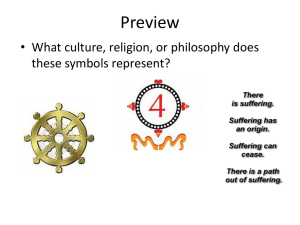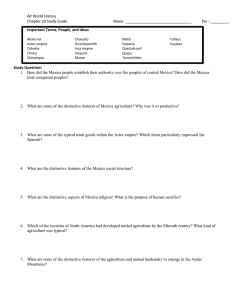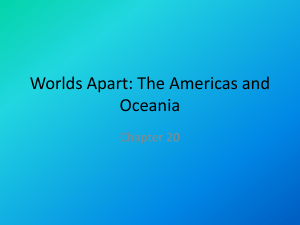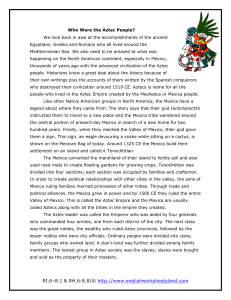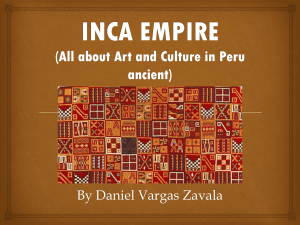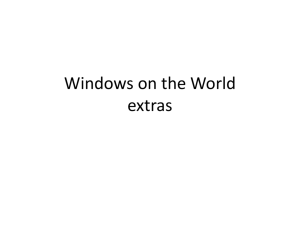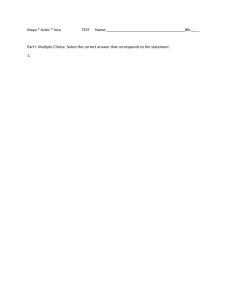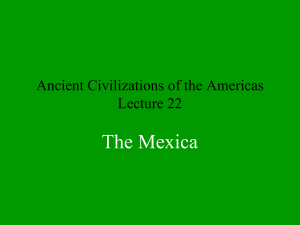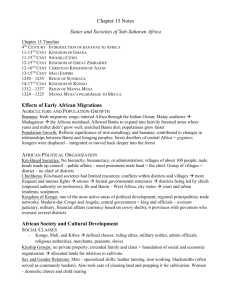Americas & Oceania: Mesoamerica & North America Empires
advertisement
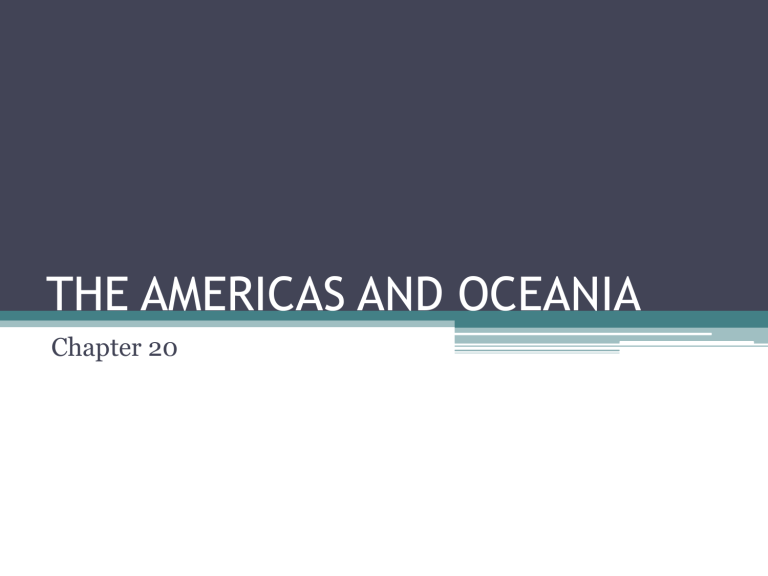
THE AMERICAS AND OCEANIA Chapter 20 States and Empires in Mesoamerica and North America • Arrival of the Mexica (or Aztecs) in central Mexico mid-thirteenth century ▫ Warriors and raiders ▫ Tenochtitlan ▫ Developed productive chinampas style of agriculture • Aztecs launched military campaigns against neighboring societies ▫ Built an empire of twelve million people, most of Mesoamerica Controlled subject peoples with oppressive tribute obligations Mexica Society • Most information comes from Spanish sources ▫ Only few books survived the Spanish conquest. • Mexica warriors were the elite ▫ Enjoyed great food (turkey, duck, vanilla, cacao), wealth, honor, land, dress, and privileges. • Mexica women had no public role, but were honored as mothers of warriors ▫ ▫ ▫ ▫ Held no property and law Commanded obedience to father and/or husband. Active in commerce and crafts Primary purpose to bear children Mexica Society • Priests also among the Mexica elite ▫ Read omens, presided over rituals, monitored ritual calendar ▫ Advisers to Mexica rulers • Most of the Mexica were either cultivators or slaves ▫ Cultivators worked on chinampas or on aristocrats' land ▫ Paid tribute and provided labor service for public works • Artisans and merchants enjoyed prestige Mexica Religion • Mexica deities adopted from prior Mesoamerican cultures ▫ Quetzalcóatl (The Feathered Serpent) supported arts, craft, and education. • Ritual bloodletting common to all Mesoamericans ▫ Human sacrifice to Huitzilopochtli ▫ Large temple,Tenochtitlan, thousands of skulls At the last expansion of the temple it is recorded that the priest sacrificed 80,000 people, may be a exaggeration but it is known that human blood flowed regularly. • THE Inca Empire, Peru, atop the Andean Highlands in the Mountains The Coming of the Incas • The Inca settled first around Lake Titicaca in the Andean highlands • Inca ruled as a military and administrative elite ▫ Use of quipu for record keeping ▫ Extensive road system linked north and south • Trade limited ▫ No large merchant or artisan class. ▫ Bartered surplus agriculture and hand-crafted goods among themselves. • Inca society was also a hereditary aristocracy ▫ Chief ruler viewed as descended from the sun ▫ Priests led celibate and ascetic lives, very influential figures Inca Society and Religion • Peasants worked the land and gave over a portion of their produce to the state • Inca priests served the gods ▫ Venerated sun god called Inti, also recognized the moon, stars, planets, rain, and other natural forces as divine. ▫ Ritual sacrifices practiced, but not of humans usually took the form of animals
